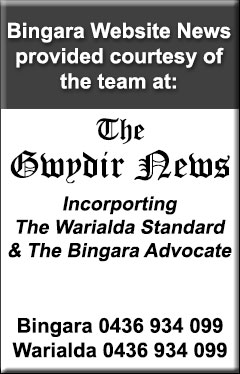Hundreds gathered for the annual commemorative service at Myall Creek in memory of the Wirrayaraay people who were murdered on the slopes in an unprovoked but premeditated act in 1838.
When Australia was first colonised by white settlers, Aborigines suffered greatly through forced removal of their lands and numerous massacres that continued well into the 19th century for agricultural purposes.
Myall Creek holds such significance because it is the only time in Australia’s history that white men were arrested, charged and hanged for the massacre of Aborigines. It was heavily investigated and documented providing an insightful glimpse into the dark times of Australia’s history – where massacres were so commonplace as well as the continuing mistreatment of Aborigines and the lack of recognition of their rights and traditional customs.
It has continued to set precedent by being at the forefront of reconciliation between indigenous and non-indigenous Australians.
The Myall Creek Memorial site was established where people can remember, acknowledge, grieve, commit to reconciliation, and where the history of 60,000 years is honoured together with the history of the last two centuries, in which the glorious parts of that history are celebrated with pride and the dishonourable parts are acknowledged with shame.
“This has always been a bad place for Aboriginal people but today it’s been made possible for us to stop here at Myall Creek” said Aunty Blacklock who is a descendent of those massacred at Myall Creek.
North Tablelands MP Adam Marshall in his address to the crowd in the morning before the pilgrimage to the Memorial said, “The memorial is about what happened here, but it is also very symbolic of other slaughters and massacres that occurred that have been lost to history.”
“Thank you to everyone who is here today in support to this service which is a tangible step towards reconciliation in our region and our country.”
The procession began from the Hall to the memorial site, where people either walked or drove.
The crowd prepared for their pilgrimage to the Memorial by passing through a smoking ceremony which is used to cleanse one’s heart and mind and wards off bad spirits so one can gather in peace and unity.
Eight memorial plaques line the serpent path that leads towards the memorial where students stood at, reading them aloud to the crowd.
At the memorial site, special guest speaker, Aunty Noelene Briggs-Smith (OAM) addressed the crowd with a moving speech.
“Reconciliation to me is about respect for each other, listening and valuing each others contribution, recognising that diversity should build a community, not pull them apart, celebrating sameness not differences and acknowledging that differences are negative but can be strength.
“We can relish the present and plan for the future but only once we’ve acknowledged our past. It’s not a process of blame but one of acknowledgement and acceptance.
It is by recognising our past and by taking hold of opportunities of the present that we can move to a reconciled future.”
The future plans for the Myall Creek Committee and the Friends of Myall Creek is to further realise their dream of creating an Educational and Cultural Centre neighbouring the memorial site.
This Centre will be the first of its kind, not only in Australia but in the world. It will incorporate both national significance as well as international importance as a recognised example of reconciliation and healing.
Aunty Noelene is advocating its creation as there is great need for a national keeping place for Aboriginal and non-aboriginal history from the district.
“Look at those (TV) programs, like Who Do You Think You Are? Non-Aboriginal people, especially those who have come out from England or from Ireland, they can go back to repositories, archives, libraries, museums – Aboriginal people can’t,” Aunty Noelene explained, noting the oral traditions of Aboriginal people and those associated history with later settlers.
“When you start doing family history, it is like a giant jigsaw puzzle – it all starts to come together and it is vital information for people in the future to look back and do their family history,” she said.
“If we can have a national keeping place up here, it is for all our history, not just for Aboriginal or for the early settlers, it is for all our history on the whole. We have an associated history and it needs to be preserved. It needs to be documented.”
Mayor John Coulton is supportive of the Centre despite its costly price tag.
“The Council has been supportive of this committee ever since it commenced and we will continue to do so. We would love to see the Centre up and running as it will be great for tourism as well as it is morally the right thing to do.”
Jo Miller, a member of the Friends of Myall Creek Committee as well as the National Committee, is positive with the future of the committee.
“We’re finalising the paperwork to become a registered charity so once that has all been approved, fundraisers can begin as well as we’ll be able to receive donations from community members and groups which will go towards making the Cultural and Education Centre dream into a reality.”
With new enthusiasm within the committee, there are plans to engage more with local government and the community to raise awareness and breadth of the committee as well as funds for the centre.



